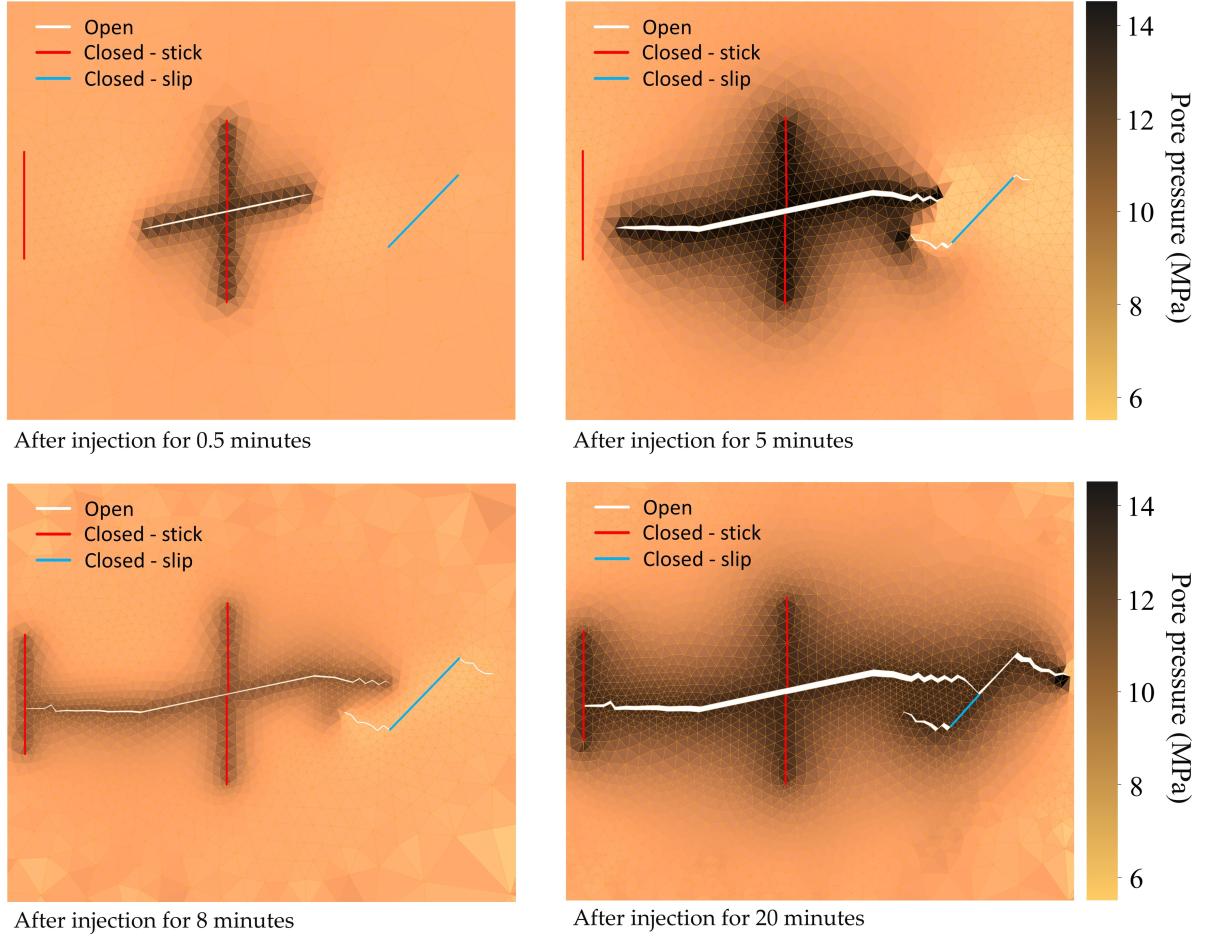Modelling of Mixed-Mechanism Stimulation for the Enhancement of Geothermal Reservoirs
This paper presents a modelling approach to simulate fracture deformation, propagation, and coalescence in porous media under anisotropic stress and fluid injection.
Hovedinnhold
Hydraulic stimulation is essential for increasing the permeability of fractured geothermal reservoirs by using pressurized fluid injection to induce hydromechanical processes. These processes cause poromechanical stress changes, leading to fracture slip, shear dilation, and tensile fracture propagation, collectively known as mixed-mechanism stimulation. The effective permeability improves significantly when new fractures connect with existing ones. While this technique enhances reservoir productivity, it also involves induced seismicity, making the understanding of coupled physics crucial for both reservoir engineering and seismic risk mitigation. This paper investigates relevant mechanisms based on a coupled hydromechanical model for poroelastic, fractured media, incorporating contact mechanics and a fracture propagation and coalesence model. The numerical solution employs a two-level approach, combining a finite volume method for poroelasticity and a finite element method for fracture propagation. The study examines the effects of injection rate, matrix permeability, and stress anisotropy on stimulation outcomes.
